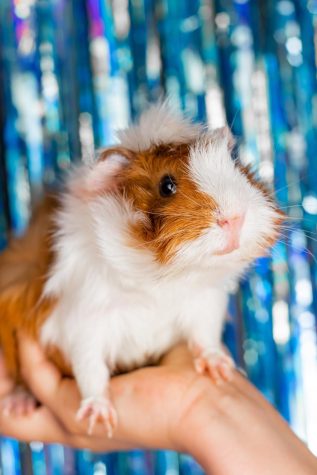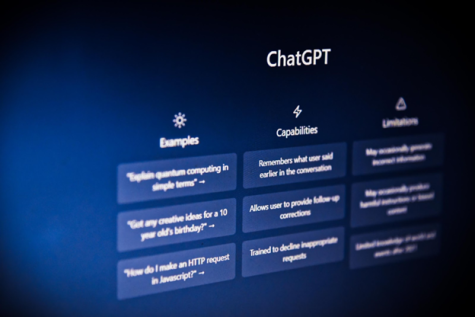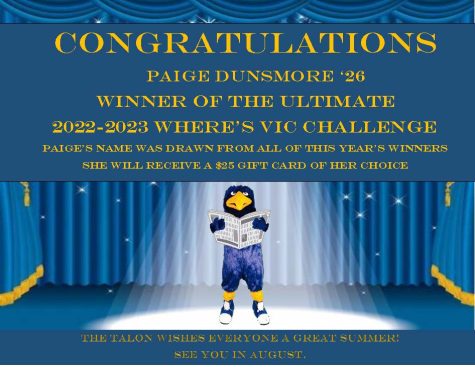Unknown Soldiers Deep Dive
“There they stood, bumbling into lines with a bit of difficulty: Mother Finland’s chosen sacrifice to world history.”

To date, one of the most compelling depictions of the realities of war for the average person is a novel that details a struggle of the soldiers of a small nation fighting against Russia- that is, Unknown Soldiers, by Vaino Linna.
It has been over a year since the Russian Federation under Vladimir Putin began its illegal and brutal invasion of Ukraine, the latest escalation in a war running in Eastern Ukraine since 2014. Over the past 365 odd days, the world has watched with astonishment as a country that many experts predicted would collapse within 72 hours has managed to hold out and even turn the tables against the — nominally — second greatest military power in the world. This remarkable feat has been possible primarily due to the resolve and courage of the men and women of the Armed Forces of Ukraine, who have stood fast despite the material odds stacked against them.
However, in rightly celebrating the soldiers of Ukraine as heroes, it can be easy to lose sight of a critical fact: they are human. They are not monoliths of inhuman courage and endurance holding back the Russian tide. They are ordinary people who feel pain and love, fear, and the true courage that comes from overcoming fear. To date, one of the most compelling depictions of the realities of war for the average person (in my opinion) is a novel that details a similar struggle of the soldiers of a small nation fighting against Russia- that is, Unknown Soldiers, by Vaino Linna.
First, here is some context. Unknown Soldiers is set against the backdrop of the Continuation War, a conflict fought between Finland and the Soviet Union from 1941-44 within the broader conflict of World War 2. This war followed on the heels of the Winter War of 1939-40, wherein Finland was faced with very similar circumstances to today’s Ukraine-faced with the threat of Soviet invasion, the smaller and less modern Finnish army put up a gallant defense that cost the Soviets far more than they had expected, but were ultimately forced to cede part of their border territories. In the Continuation War, the Finns now took the offensive in conjunction with the invasion of their (sort-of) ally Nazi Germany, aiming to retake their lost territory. In this, they were initially successful, but as the war turned against Germany, the Finns, too, were pushed out of much of the territory they had taken. The armistice dictated that Finland return the territory seized in the war to the Soviets and forcefully expel German troops from Finland.
Unknown Soldiers (Tuntematon Sotilas in Finnish) was published in 1954- only ten years after the war ended- and quickly became successful in Finland. Its reputation has only grown over the years to the point where it is considered a cornerstone of Finnish literature. It is required reading for Finnish students. It has received three movie adaptations: the 1955 version is called by many a classic of Finnish cinema and is broadcast annually on national television for the country’s Independence Day. Many phrases and characters from the book have passed into the country’s popular culture. But why has this book become so well-known and beloved? Well, to use Vaino Linna’s words, the novel was the first to “give the Finnish soldier a brain”- that is, to portray the soldiers as true, unidealized human beings. Where earlier depictions of the war presented the Finnish army as perfectly heroic and obedient to the Motherland, Linna’s novel showed the soldiers as they were- individuals with their own emotions and ability to think freely, who truly reflected the Finnish spirit of independence.
(A note before I proceed: for this review, I am using the 2015 English translation by Liesl Yamaguchi and published by Penguin Books. As I am not a native Finnish speaker, I cannot vouch either way for the authenticity of the translation from the original. However, the English is very well polished and effective at conveying ideas without clunkiness- in particular, I admire that Yamaguchi has tried to adapt the characters’ distinctive regional accents into something that English readers can understand. The dialogue would not be the same without that touch, which I’ll touch on later.)
It is often said that you should not judge a book by its cover. However, the cover of Unknown Soldiers says much about the book. Depicting the white silhouette of a Finnish soldier against a red backdrop, it is simple yet striking: a perfect way to describe Linna’s writing. The text does not overly dwell on poetic imagery or complicated manners of speech. Instead, it is as lean and direct as the men portrayed. The story is told by an omniscient third-person narrator, jumping between the viewpoints of a wide cast of soldiers within the same Finnish Army machine gun company. The novel is truly made by its characters: all of them are distinctly memorable in their own ways, reflecting a broad spectrum of regional and personal backgrounds. A short rundown of the main squad the narrator, follows most includes: the carefree country boy Hietanen, the quiet leader-by-example Koskela, the joker Vanhala, the unscrupulously resourceful Rahikainen, the perpetually bitter and rebellious Lehto, and the open communist Lahitenen. Meriting a special mention is the later arrival of Rokka, whose jovial personality and nearly incomprehensible rural dialect mask an alarming proficiency at killing born in the most brutal combat of the Winter War. The characters are further distinguished by the unique accents and manners of speech many of them receive. This also has the effect of further streamlining the syntax by removing the need for obtuse phrases like “he said” or “said he” in many cases- it doesn’t need to be said Rokka is speaking when the words “Now lissen here!” appear on the page, or that Hietanen is butting in when the catchphrase “Pre-tty strange if you ask me” comes up.
The vast majority of these characters are civilians who have been called up to fight in the coming war, much as many of Ukraine’s soldiers in the early months of the war were new conscripts and volunteers, and the plot is primarily concerned with charting their lives and in many cases deaths, in that war. The book can be split into four rough sections: the company’s shift from training to the frontline at the outset of the war and their baptism by fire, the advance to the old Finnish border and beyond into Soviet territory, the period of stalemate and trench warfare, and the final chaotic retreat back to Finland at the war’s end. That said, Linna needs to make more effort to provide an exact chronology of events, highlighting the universality of the characters’ experiences instead. Much of the story focuses not on battles, but on the daily lives of the soldiers: waiting around, digging, marching, etc. In portraying this realistic portrait of a soldier’s inglorious routine, Linna also questions the romanticized image of the perfect, disciplined, unquestioning soldier hero. The Finnish troops are a motley, rowdy bunch that reflects the discipline issues faced by the actual, primarily non-professional Finnish army, and a major theme of the novel is the conflict between ideological, discipline-obsessed officers and the rank-and-file who care more about ensuring their material well-being and comfort than strictly following the army regulations. The soldiers often go out of their way to rebel against the strict discipline imposed on them- one soldier totes around a bow-and-arrow and speaks in a ridiculously posh manner to annoy his superiors.
In contrast, others refuse to comply with demands they deem outrageous. The heroic officers of this story are not the gung-ho, patriotic medal-chasers seen in other stories, but men like Koskela who lead by quiet example and respect the boundaries of their subordinates. Ultimately, the characters are relatable because they are imperfect- they complain when ordered to resume a long march, grumble over insufficient rations, futilely chase after the female auxiliary workers, and generally put their immediate safety and comfort above any ideological goal or try to be the hero. In other words, they react as ordinary people would to the hardships of soldiering, even before they go into battle.
However, when they go into battle, the company proves its status as heroes. Combat in the forests and swamps of Eastern Finland is depicted as confusing, chaotic, and small-in-scale- the war is rarely fought in massive battles, but in many series of brief skirmishes. We watch the men go from frightened greenhorns in their first attacks, struggling to summon the courage to advance in the face of bullets, to seasoned veterans who can effectively work together. Once again, however, their immediate goal is not to play the hero and perform conspicuous deeds of valor, but to merely survive the moment at hand. Acts of heroism do occur, to be sure. Still, the characters that achieve them do so are motivated primarily by the heat-of-the-moment recognition that the survival of themselves and their friends depends on something being done: for instance, crawling up to a Soviet tank with an explosive charge under fire when no other weapons are available to prevent it from overrunning their position. However, as I alluded to earlier, the Finns ultimately lost this war. As the Soviets, bolstered by their successes elsewhere against the Nazis, finally break through the Finnish lines, the machine gun company fights a series of losing running battles to escape from the oncoming Soviet advance. The novel picks up an emotional impact at this point as the army disintegrates into columns of fleeing men, and characters begin dropping like flies. This is reflected in the syntax, where once a deceased character was often eulogized with a paragraph or more, sometimes only a sentence of remark is given by the narrator, leaving the reader to process the death on their own.
What is more striking is how the higher officers in the Finnish army attempt to press on, ordering the men to hold untenable defensive lines to salvage a clearly lost war. In one poignant scene, after Koskela chooses to ditch the unit’s machine guns so they can carry their wounded men out of an encircled position, he is berated by a senior officer for reducing his unit’s combat effectiveness in favor of saving lives. The ultimate pointlessness of the war is seen in the novel’s final scene: the shell-shocked survivors emerge from their trenches after the last Soviet artillery barrage and sit listlessly by the roadside, listening to the declaration of peace on the radio. Some accept the harsh terms soon to come as only natural, while at least one officer weeps over the death of Finland, but most choose to sit in silence, thankful that their ordeal is finally over.
So why does this matter? Why did I relate this mid-century Finnish novel to the ongoing war in Ukraine? After all, Ukraine’s war is far from lost and pointless as Finland’s turned out to be. This war has lessons to be learned for both sides. The Finnish soldiers note that, as soon as they crossed the border from reclaimed Finnish territory into the Soviet Union proper, they lost all legitimacy as their motives shifted from liberation to conquest. The Russian invasion of today was always (not counting propaganda) about conquest, but the message against invading sovereign countries still rings clear. In addition, the later fanaticism of the higher command that I previously mentioned strikes an eerily accurate chord in Russia today, illustrating the devastating impacts that leaders who are too deluded with dreams of greatness far beyond the actual means of their country to be connected with reality can have on those left to carry out their orders. But I’d like to focus more on this novel’s insights for the Ukrainian side. I believe Finland was justified in fighting to regain its rightful territory lost to the Soviets in 1940, just as Ukraine today is justified in fighting to regain the rightfully Ukrainian territory it has lost since 2014. Looping back to my introduction, I also believe that the personnel of the Ukrainian Armed Forces are heroes. But heroism is not a simple thing. Too often, I have seen the narrative of the war reduced to simply “heroic Ukrainians dunk on evil Russians,” primarily online. Maybe it’s merely a consequence of our modern culture and consumption of news, where we want the quickest, simplest take to digest before moving on to something else. But I think it’s possible to celebrate the merits and heroics of Ukraine’s military while acknowledging its failures and the toll it is suffering. These are intertwined in the true nature of heroism in conflict; bravery is not merely brave actions in the field, but the ability to carry on despite setbacks to continue the fight for what is right. For every Ukrainian soldier rightly mentioned in the news for some act of heroism, dozens and hundreds more simply soldier on, making Ukraine’s fight for independence possible. I hope Ukraine wins that struggle and someday emerges as a prosperous European country like Finland. But that will only be possible with Ukraine’s Unknown Soldiers.










